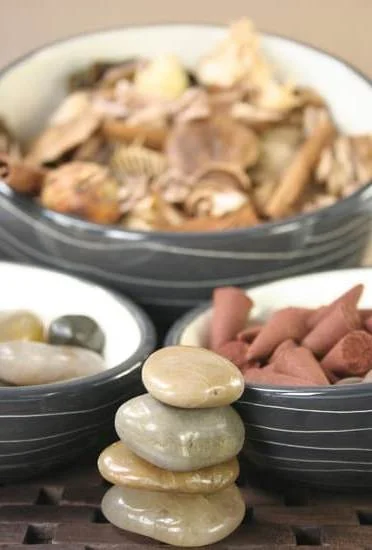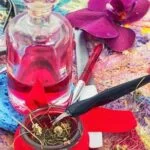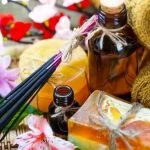Aromatherapy sprays have gained popularity in recent years as people seek natural and holistic ways to promote relaxation and improve overall well-being. These sprays, infused with essential oils, can be easily made at home and offer a myriad of benefits for both the mind and body. In this article, we will delve into the world of aromatherapy sprays, exploring their advantages and how you can create your very own personalized blend.
Aromatherapy has been practiced for centuries and is based on the use of aromatic plant compounds to enhance physical and psychological well-being. The aromas from essential oils can have a profound impact on our emotions, mood, and overall health. Aromatherapy sprays provide an easy way to incorporate these powerful scents into your daily routine.
Not only do aromatherapy sprays help create a relaxing atmosphere, but they also have numerous other benefits. From reducing stress and anxiety to promoting better sleep and boosting concentration, these sprays can positively impact all areas of your life. In addition to their therapeutic effects, they also serve as a natural air freshener with their pleasant fragrances.
With just a few simple steps, you can make your own aromatherapy spray using essential oils that cater to your specific needs and preferences. Whether you’re looking for a peaceful lavender blend or an energizing citrus mix, we will guide you through the process of creating your desired aroma in the following sections. So let’s get started on this journey to relaxation and wellness through the power of aromatherapy sprays.
Understanding the Benefits of Aromatherapy
Aromatherapy has been used for centuries as a natural way to promote relaxation, reduce stress, and improve overall well-being. Essential oils, which are the key ingredients in aromatherapy sprays, have been found to have a wide range of benefits for both the mind and body. Understanding these benefits can help you choose the right essential oils for your desired effect.
One of the primary benefits of aromatherapy is its ability to improve mood and emotional well-being. Certain essential oils, such as lavender and bergamot, are known for their calming properties and can help alleviate feelings of anxiety and promote relaxation. On the other hand, citrus essential oils like orange and lemon are invigorating and uplifting, making them perfect for boosting energy levels and improving focus.
In addition to improving mood, aromatherapy can also have physical benefits. Some essential oils have anti-inflammatory properties and can help relieve muscle tension and headaches. For example, peppermint oil is often used to soothe sore muscles, while eucalyptus oil is known for its ability to clear congestion and support respiratory health.
With a better understanding of how aromatherapy works, you can select the right essential oils for your needs and create a personalized blend that suits your preferences. Whether you’re looking to enhance relaxation or boost energy levels, aromatherapy sprays can be a powerful tool in improving your overall well-being.
| Essential Oil | Benefits |
|---|---|
| Lavender | Calming, reduces anxiety |
| Bergamot | Relaxation, stress relief |
| Orange | Uplifting, energizing |
| Lemon | Increase focus, boost mood |
| Peppermint | Relieves muscle tension, soothes sore muscles |
| Eucalyptus | Clears congestion, supports respiratory health |
Essential Tools and Ingredients
Gathering the Necessary Tools
Before you can start making your own aromatherapy spray, it’s important to gather all the necessary tools and ingredients. Luckily, you don’t need any fancy equipment or hard-to-find ingredients. Here are the essential tools you’ll need:
- Spray Bottles: Look for small glass or plastic spray bottles with fine mist sprays. These are perfect for dispensing your aromatherapy sprays without wasting too much product.
- Measuring Utensils: You’ll need measuring cups or spoons to accurately measure your ingredients. It’s best to use separate utensils for each ingredient to avoid cross-contamination and ensure accurate measurements.
- Funnel: A funnel will make pouring your ingredients into the spray bottles much easier and less messy. Choose a funnel that fits snugly into the opening of your spray bottles.
- Labels: It’s important to label your aromatherapy sprays with the name of the blend, date of creation, and any safety precautions or usage instructions. This will help you keep track of your blends and ensure safe usage.
- Safety Gloves and Masks (Optional): While not necessary, wearing gloves and a mask when handling concentrated essential oils can provide an extra layer of protection, especially if you have sensitive skin or respiratory issues.
Gathering the Essential Ingredients
Now that you have your tools ready, it’s time to gather the essential ingredients for making aromatherapy spray:
- Distilled Water: Using distilled water helps prevent bacterial growth in your spray and extends its shelf life.
- Alcohol or Witch Hazel: Adding a small amount of alcohol or witch hazel to your spray acts as a natural preservative and helps disperse the essential oils throughout the water.
- Essential Oils: This is where you can get creative. Choose high-quality essential oils in scents that appeal to you and offer the desired benefits. Common choices include lavender for relaxation, eucalyptus for respiratory support, and citrus oils for energy and upliftment.
- Optional Add-ons: You can enhance your aromatherapy spray by adding a few drops of vegetable glycerin for added moisturization, aloe vera gel for soothing properties, or natural coloring agents like dried flower petals or mica powder for an aesthetically pleasing look.
Remember to always store your essential oils in dark glass bottles away from direct sunlight to maintain their potency. With these tools and ingredients on hand, you’re now ready to begin creating your own aromatherapy sprays at home.
Choosing the Right Essential Oils
When it comes to creating your own aromatherapy spray, choosing the right essential oils is crucial. Each essential oil has its own unique properties and aroma that can enhance specific moods and promote overall well-being. Here is a guide to help you select the perfect aromas for your spray:
- Consider Your Needs: Before selecting essential oils, it’s important to consider your specific needs and goals. Are you looking for a spray that promotes relaxation and stress relief? Or do you want something uplifting and energizing? Identifying your needs will help you choose the right oils for your desired effects.
- Research Different Scents: Take some time to research different scents and their associated benefits. For example, lavender oil is well-known for its calming and soothing properties, while peppermint oil can help improve focus and mental clarity. By understanding the effects of each scent, you can make informed decisions about which oils are most suitable for your spray.
- Experiment with Blends: Don’t be afraid to experiment with blending different essential oils together. Mixing complementary scents can create unique synergies that enhance their individual properties. For example, combining lavender and chamomile oils can create a relaxing blend that promotes better sleep.
- Start with Base Notes: When selecting essential oils for your blend, it’s helpful to start with base notes. Base notes have stronger and longer-lasting scents compared to middle or top notes. Some common base note essential oils include patchouli, vetiver, and cedarwood. Adding these oils as a foundation can create a balanced and complex aroma in your spray.
- Consider Personal Preferences: Lastly, consider your personal preferences when choosing essential oils. While certain scents may have specific benefits or effects, it’s important to choose ones that you genuinely enjoy. This will ensure that you actually use and enjoy your aromatherapy spray.
By following these guidelines, you can select the perfect essential oils for your homemade aromatherapy spray. Remember to experiment and have fun with different scents to find the combinations that work best for you.
Preparing the Base
Once you have chosen the essential oils for your aromatherapy spray, it is important to select the right carrier oil as the base. Carrier oils are used to dilute essential oils and help distribute them evenly when making aromatherapy sprays. Additionally, carrier oils offer their own unique benefits to enhance the overall effectiveness of the spray.
There are several different carrier oils to choose from, each with its own properties and therapeutic benefits. Some popular options include:
- Sweet Almond Oil: This light and easily-absorbed oil is rich in vitamin E, which helps moisturize and nourish the skin. It is a great option for people with sensitive skin as it has a low risk of causing irritation.
- Jojoba Oil: Known for its similarity to natural human sebum, jojoba oil is quickly absorbed by the skin without leaving a greasy residue. It is moisturizing and suitable for all skin types.
- Fractionated Coconut Oil: This odorless and non-greasy oil is derived from coconut oil through a process that removes long-chain fatty acids. It has a long shelf life and works well in spray formulations due to its light texture.
- Grapeseed Oil: Extracted from grape seeds, this oil is lightweight and absorbs easily into the skin. It contains antioxidants that help protect against free radical damage and promotes skin elasticity.
It’s important to note that some carrier oils may have a scent of their own, which can subtly affect the aroma of your final product. Consider this when choosing your carrier oil based on personal preferences or desired effects.
| Carrier Oil | Properties |
|---|---|
| Sweet Almond Oil | Light, easily absorbed, moisturizing |
| Jojoba Oil | Similar to human sebum, quick absorption, suitable for all skin types |
| Fractionated Coconut Oil | Odorless, non-greasy, light texture, long shelf life |
| Grapeseed Oil | Lightweight, absorbs easily, antioxidant-rich |
To create your aromatherapy spray base, simply combine your chosen carrier oil with distilled water or hydrosol. The ratio will depend on personal preference and the desired concentration of the spray. As a general starting point, you can mix one part carrier oil with three parts water or hydrosol.
Once you have prepared your base mixture, you can move on to adding the essential oils and creating the perfect blend for your desired aromatherapy spray. Experiment with different combinations to find the scent and therapeutic effects that work best for you.
Mixing Essential Oils
Mixing essential oils is a crucial step in creating the perfect blend for your desired aromatherapy spray. This is where you can get creative and experiment with different combinations of oils to achieve the specific benefits and aroma you’re looking for. Here are some tips to help you mix essential oils effectively:
- Start with a clear intention: Before you begin mixing, think about the purpose of your aromatherapy spray. Are you looking to create a soothing blend for relaxation, or an invigorating one for energy? Having a clear intention in mind will guide your selection of essential oils and help you create the desired effect.
- Research oil properties: Each essential oil has unique properties and benefits. Take some time to research various oils and their effects on mood and well-being. For example, lavender is known for its calming properties, while citrus oils like lemon and grapefruit can be uplifting and energizing. By understanding these properties, you can choose oils that complement each other and create a harmonious blend.
- Consider top, middle, and base notes: When mixing essential oils, it’s important to consider the different “notes” of each oil. Just like perfumes have different layers of fragrance, essential oils also have top, middle, and base notes that contribute to the overall scent profile.
Top notes are usually light and evaporate quickly, middle notes provide balance to the blend, while base notes are heavier and linger longer. Aim for a balanced combination of all three notes for a well-rounded aroma. - Start with small amounts: It’s recommended to start with small amounts when experimenting with different oil blends. Begin with just a few drops of each oil until you find the right balance of scents and strengths. You can always add more later if needed.
- Use a carrier oil: Essential oils should never be used directly on the skin or sprayed as is. They need to be diluted in a carrier oil to ensure safe use. In the next section, we will explore different carrier oils and their benefits for aromatherapy sprays.
Remember, creating the perfect blend may take some trial and error. Don’t be afraid to mix and match different essential oils until you find the combination that works best for you. Have fun with it and enjoy the process of creating your own personalized aromatherapy spray.
DIY Aromatherapy Spray Recipes
Relaxing Lavender Blend
To create a relaxing lavender aromatherapy spray, you will need the following ingredients and tools:
- 10 drops of lavender essential oil.
- 2 ounces of distilled water.
- 1 ounce of witch hazel or vodka.
- A glass spray bottle.
- Step 1: Begin by sterilizing your spray bottle. You can do this by thoroughly washing it with hot, soapy water and rinsing it well.
- Step 2: Pour the witch hazel or vodka into the spray bottle. This acts as an emulsifier to help mix the oil and water together.
- Step 3: Add the lavender essential oil to the bottle. Lavender is well-known for its calming properties, making it the ideal choice for a relaxing aromatherapy spray.
- Step 4: Fill the rest of the bottle with distilled water, leaving some room at the top for shaking.
- Step 5: Securely close the spray bottle and give it a good shake to combine all the ingredients.
Your relaxing lavender blend is now ready to use. Spray it in your bedroom before going to sleep or whenever you need a moment of calmness and relaxation throughout your day.
Energizing Citrus Blend
For an energizing citrus aromatherapy spray, gather these ingredients and tools:
- 8 drops of sweet orange essential oil.
- 6 drops of grapefruit essential oil.
- 4 drops of lemon essential oil.
- 2 ounces of distilled water.
- A glass spray bottle.
- Step 1: Cleanse and sanitize your spray bottle by washing it with warm soapy water and rinsing thoroughly.
- Step 2: Pour in the distilled water into the spray bottle, leaving some space at the top for shaking later on.
- Step 3: Add each type of essential oil drop-by-drop to create a refreshing blend. Citrus essential oils are known for their uplifting and invigorating properties.
- Step 4: Secure the spray bottle’s cap tightly and give it a vigorous shake to ensure all the ingredients are well-mixed.
You have now created an energizing citrus blend that can instantly uplift your mood and provide a burst of freshness. Spray this blend in your workspace, living room or any area where you need an energy boost, especially during long workdays or after a tiring workout session.
Experimenting with different essential oil combinations is encouraged. Use these recipes as a starting point, but feel free to adjust the ratios or try new aroma combinations to find your personal favorites.
Tips and Tricks for Effective Aromatherapy Spray Usage
Once you have created your own homemade aromatherapy spray, it is important to utilize it in a way that maximizes its benefits and enhances your overall well-being. Here are some useful tips and tricks for effective aromatherapy spray usage:
- Choose the Right Application Method: Aromatherapy sprays can be used in various ways to achieve different results. For relaxation and stress relief, you can spray it onto your pillow or bedding before bedtime. If you want to uplift your mood or create a refreshing atmosphere, you can mist the spray into the air around you or onto curtains and furniture.
- Use Proper Dilution Ratios: It is crucial to dilute essential oils properly before using them in an aromatherapy spray. This ensures safety and prevents skin irritation or other adverse reactions. Be sure to follow recommended guidelines for diluting essential oils based on their potency and the desired effect.
- Store Your Spray Correctly: To maintain the integrity of your homemade aromatherapy spray, store it in a cool, dark place away from direct sunlight or heat sources. This will help preserve the quality of the essential oils and extend the shelf life of your spray.
- Experiment with Different Scents: Aromatherapy is highly personal, so don’t be afraid to explore different essential oil combinations and scents until you find what works best for you. Try creating blends based on therapeutic properties or simply choose fragrances that appeal to your senses.
- Incorporate Rituals into Your Routine: Using an aromatherapy spray can become even more beneficial when combined with self-care rituals. Set aside dedicated time each day to mindfully use your spray, whether it’s during meditation, yoga practice, or while taking a relaxing bath.
- Practice Mindfulness: When using an aromatherapy spray, take a moment to fully immerse yourself in the scent and focus on its effects on your body and mind. Practice deep breathing techniques and allow yourself to fully relax and unwind.
By following these tips and tricks, you can maximize the benefits of your homemade aromatherapy spray and enhance your overall well-being. Experiment with different scents, be mindful during its use, and incorporate it into your daily routine to truly experience the therapeutic effects of aromatherapy.
Safety Precautions
As with any product that involves the use of essential oils, it is important to take certain safety precautions when making and using aromatherapy sprays. While essential oils can provide numerous benefits for relaxation and well-being, they are highly concentrated substances and should be handled with care. By following these guidelines, you can ensure the safe and effective use of your homemade aromatherapy sprays.
- Dilute the essential oils: Essential oils should always be diluted before being used in aromatherapy sprays. This helps to reduce the risk of skin irritation or sensitivities.
The general rule of thumb is to use a 2% dilution rate, which means adding no more than 12 drops of essential oil per ounce of carrier oil or water. However, some essential oils may require even lower dilution rates, so it is important to do your research and follow specific recommendations for each oil. - Conduct a patch test: Before using your aromatherapy spray on your body or in your living space, it is wise to conduct a patch test on a small area of skin. Apply a small amount of the diluted spray on your inner forearm or wrist and observe if there is any adverse reaction within 24 hours. If you experience redness, itching, or any other signs of irritation, avoid using that particular blend.
- Keep out of reach from children and pets: Essential oils are powerful substances that should be kept away from children and pets who may accidentally ingest them or have adverse reactions to them. Store your aromatherapy sprays in properly labeled containers out of reach from young ones and be cautious about where you place them in your home.
- Avoid contact with eyes and sensitive areas: Aromatherapy sprays should not come into direct contact with your eyes or other sensitive areas such as mucous membranes. If accidental contact occurs, rinse the affected area with plenty of water and seek medical advice if necessary.
- Store properly: Essential oils are volatile compounds that can degrade over time when exposed to heat, light, and air. It is important to store your aromatherapy sprays in dark glass bottles away from direct sunlight and in a cool, dry place. This will help to preserve the potency and effectiveness of the essential oils.
By following these safety precautions, you can enjoy the benefits of aromatherapy sprays while minimizing any potential risks. Remember to always use essential oils responsibly and consult with a qualified aromatherapist if you have any specific concerns or questions about their usage.
Exploring Alternative Uses for Aromatherapy Sprays
In addition to using aromatherapy sprays for relaxation and wellness, there are many creative ways to incorporate them into your daily life. Here are some alternative uses for your homemade blends that can enhance your well-being and add a pleasant fragrance to your home.
One way to use aromatherapy sprays is by incorporating them into your skincare routine. Many essential oils have properties that can benefit the skin, such as reducing inflammation, soothing irritation, and promoting a healthy complexion.
You can create a facial mist by diluting a few drops of your chosen essential oil blend in water or aloe vera gel. Spritzing this onto your face throughout the day not only imparts a delightful scent but also provides nourishment and hydration to your skin.
Another creative use for aromatherapy sprays is as a room freshener or linen spray. Simply spritzing your homemade blend into the air can instantly transform the atmosphere of any room, creating an uplifting or calming ambiance depending on the essential oils you choose. You can also lightly mist it onto curtains, pillows, or beddings to infuse them with a lovely fragrance that promotes relaxation and sleep.
Furthermore, you can utilize aromatherapy sprays during yoga or meditation practices to enhance mindfulness and deep relaxation. By spraying your chosen blend onto your yoga mat or around your meditation space, you engage multiple senses simultaneously, allowing the aroma to help center and focus your mind while promoting a sense of calm and tranquility.
Incorporating aromatherapy sprays into various aspects of your life not only boosts mental and physical well-being but also adds a touch of luxury and self-care. Whether it’s refreshing your car interior with a gentle spritz or using it as an all-natural air freshener in bathrooms or closets, these homemade blends offer endless possibilities for enhancing both personal wellness and home fragrance.
So get creative with how you use your own custom-made aromatherapy spray blends and enjoy the many benefits they bring to your daily routine.
Frequently Asked Questions
How do you make natural aromatherapy spray?
Making natural aromatherapy spray is a straightforward process that involves a few simple steps. First, gather your ingredients, which typically include distilled water, essential oils of your choice, and a spray bottle. Next, fill the spray bottle with water, leaving enough space for the oils. Add around 10-20 drops of essential oil into the bottle, depending on how strong you’d like the aroma to be.
Shake the bottle well to ensure proper mixing of the oils and water. Finally, your natural aromatherapy spray is ready for use. Remember to shake it before every use to disperse the oils evenly throughout the water.
What can I mix with essential oils to make spray?
Essential oils can be mixed with various substances to create sprays with different purposes or effects. Besides water, you can mix essential oils with witch hazel or rubbing alcohol to make sprays that have additional benefits such as prolonging shelf life or acting as natural preservatives.
Carrier oils like jojoba oil or almond oil can also be used in combination with essential oils for moisturizing and nourishing sprays for skin or hair. Just keep in mind that when using carrier oils instead of water, you may need to shake the spray bottle more vigorously before each use to thoroughly blend the ingredients.
Can you mix essential oils with water for room spray?
Yes, you can mix essential oils with water to create room sprays. Water serves as a useful base for diluting essential oils and spreading their aromatic properties throughout a room. To make an effective room spray using essential oils and water alone, start by filling a spray bottle three-quarters full with distilled or filtered water. Then add around 15-20 drops of your preferred essential oil(s) into the bottle.
Close the cap securely and gently shake the bottle until everything is well combined. Ensure that you shake it again before each use to disperse any settled droplets of oil throughout the mixture for consistent fragrance distribution in your space. However, please note that since water does not have any emulsifying properties, the oil and water mixture may separate over time.

Are you looking for a natural way to improve your health and wellbeing?
If so, aromatherapy may be the answer for you.





